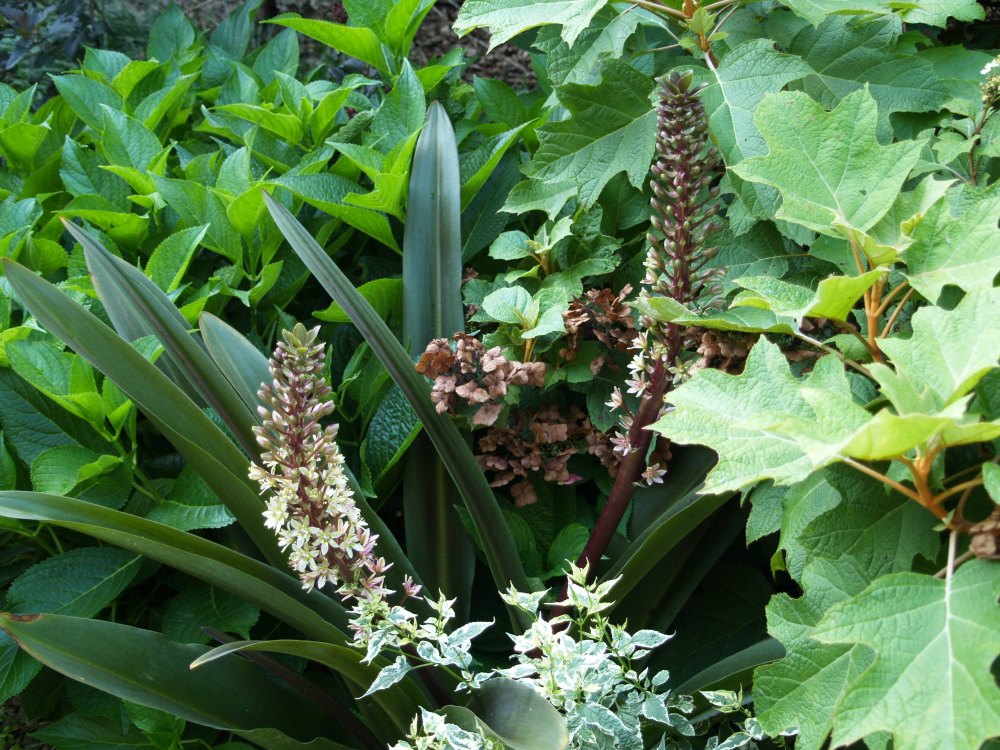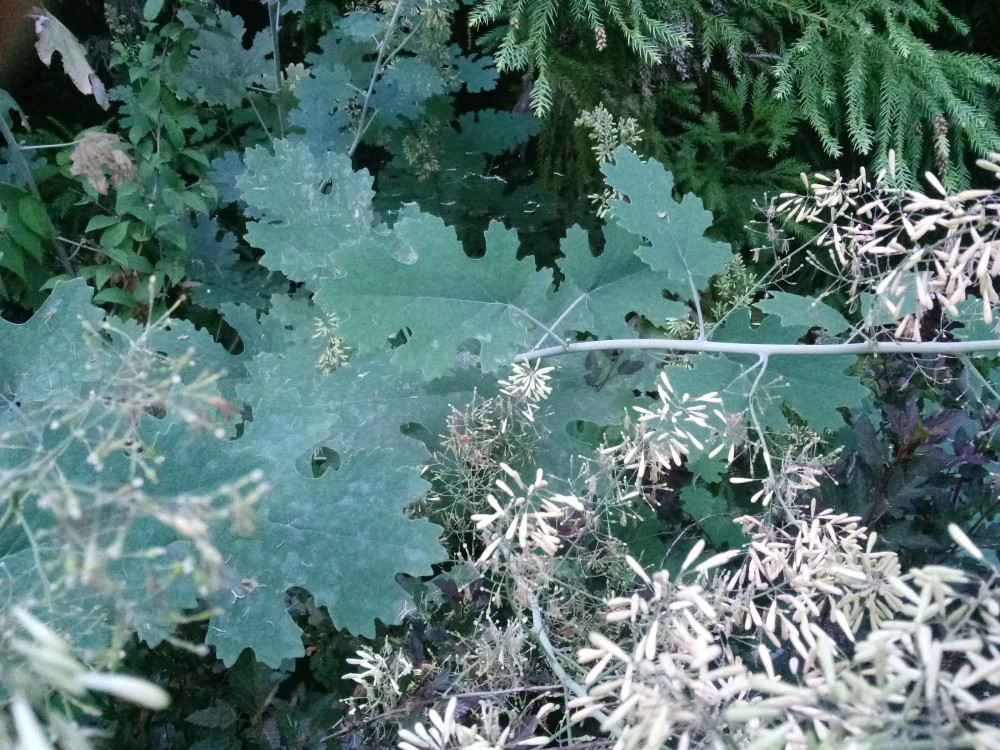I am, at least, partially aware of my weaknesses, and others are frequently pointed out by my wife. One that I am particularly conscious of is poor attentiveness. If I’m not constantly reminded, I’m likely to forget what’s planted where, so bulbs are in constant peril of damage as I enthusiastically fill a gap that’s already been filled, though not with foliage at the moment.
A month ago, I noticed a strange speckled growth in the mound beside the summerhouse, nearly in the spot where a poorly performing dwarf spruce was cut out over the winter. It seemed unlikely it could be something that remained long dormant in the spruce’s shade, but I couldn’t recall planting anything, and why would I plant here anyway? The area is already overgrown, thus the reason for the spruce doing poorly.
Whatever this was, it was clearly planted, and it took a few weeks before it became clear that this was a pineapple lily (Eucomis bicolor, above), and another week later, a second. I checked back on my January order, and three were planted, though I have no clue where the third is. Maybe the three were planted together and one didn’t make it. In any case, this pineapple lily is growing just tall enough to rise above the jumble of low foliage, and it appears that this location might be a good one.

If so, this will be the only pineapple lily that’s growing without overhanging foliage that encourages spindly growth and spotty flowering. Several ‘Sparkling Burgundy’ (above) were rescued, I hope not too late, from beneath low arching branches of an Oakleaf hydrangea for about the tenth straight year. Perhaps I’ll learn someday to keep the lower branches pruned back early in the year, but probably I won’t.
A plume poppy (Macleaya cordata, below) once filled the space of a hundred square feet or more between yellow tipped cryptomerias (Cryptomeria japonica ‘Sekkan-sugi’) along the property line in the rear garden. As many plants with yellow foliage do in this area, the color on new growth is evident only for a short period before it fades in our summer heat, but over a few decades the cryptomerias have grown considerably to crowd out all but a small area of the plume poppy, which is practically a weed. Weed or not, it can’t take the competition from a large evergreen, so here are the remnants, poking from under one cryptomeria, but behind a shrub (Deutzia) so that it is seen only if you’re looking for it.
Perhaps I’ll transplant part of this clump later in the year. There are a few spots that might work if they’re not too wet. Otherwise, it won’t be more than another year or two before it’s gone, so moving it is worth the risk. If I remember.


How much sun does your Cryptomeria japonica ‘Sekkan-sugi’ get? Is it getting east or west light?
The cryptomerias are located along the northwestern border of the garden. The lower half of the cryptomerias are shaded, but the upper portions are in the summer sun most of the day. I visit Oregon every year, where yellow tipped plants sometimes burn in the intense summer sunlight, but where colors are much more vivid than on the hotter, more humid east coast.
Don’t worry about forgetting Dave…I’m sure the plants don’t mind! They seem happy enough and are beautiful! Thanks again for the lovely blog and pics! 😀
What, me worry? I subscribe to the “everything will work out in the end” philosophy, and this is likely to be the reason I don’t pay as much attention as I should.
Cryptomeria does somewhat well on the coast, which is a surprise, not that they do well, but that they are here at all. I never see them in nurseries. They do not do well in the Santa Clara Valley. We studied it in school, but then saw them only on rare occasion afterward. I know it when I see it, but could not identify any of the cultivars.